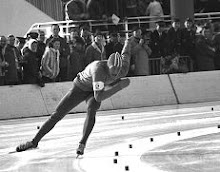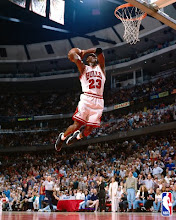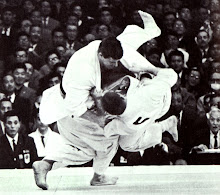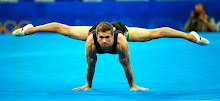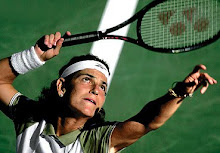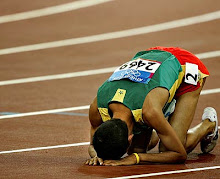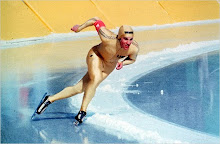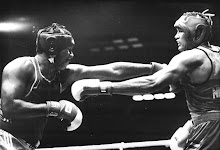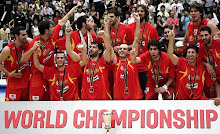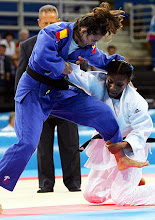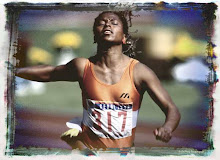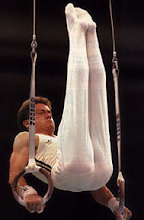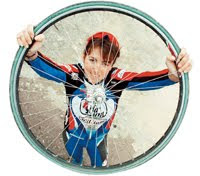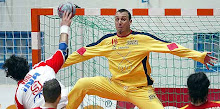 Keris KALAWIJAN - SURAKARTA (INDONESIA)
Keris KALAWIJAN - SURAKARTA (INDONESIA) (Pamor Ngulit Semangka - 31 luk)
Private Collection.

The Keris (Kris), is the oldest distinctive weapon (dagger) of the Indonesian culture (the by the dutch so beloved former colonies of the Dutch East-Indies – “Tèmpo Dulu”) and Malaysia and is found in a variety of forms and origin ranging from Northern Sumatra and Malaysia to the far distant Mindanao in the Philippines.
 The keris is seldom very sharp (although it is a weapon, it is not made for killing) and its lightweight indicates that it evolved as a thrusting dagger that used to be a permanent part of the outfit of every Javanese, Balinese and Sumatran male. It is common belief in Indonesia that keris possess sacred powers used for protective, magical, and mystical purposes. My brother-in-law, born in Indonesia, does not want to have any keris in his home for fear for dangerous negative spiritual power. Depending on the circumstances, this simple weapon had the ability to bring its owner incredible strength and self-confidence in times of trouble. With close links to the unknown world of the supernatural, the keris was a safeguard against attack of a physical and metaphysical nature. It was the tool of ancient heroes and kings, becoming a symbol of both courage and beauty. Sultans had elaborated special versions of the kris for them by famous bladesmiths. Keris blades are hammer-welded of special iron, even meteoric iron.
The keris is seldom very sharp (although it is a weapon, it is not made for killing) and its lightweight indicates that it evolved as a thrusting dagger that used to be a permanent part of the outfit of every Javanese, Balinese and Sumatran male. It is common belief in Indonesia that keris possess sacred powers used for protective, magical, and mystical purposes. My brother-in-law, born in Indonesia, does not want to have any keris in his home for fear for dangerous negative spiritual power. Depending on the circumstances, this simple weapon had the ability to bring its owner incredible strength and self-confidence in times of trouble. With close links to the unknown world of the supernatural, the keris was a safeguard against attack of a physical and metaphysical nature. It was the tool of ancient heroes and kings, becoming a symbol of both courage and beauty. Sultans had elaborated special versions of the kris for them by famous bladesmiths. Keris blades are hammer-welded of special iron, even meteoric iron. Leaving the former dutch colonists apart, most people in Holland of my generation learned about the keris thanks to the television serie “The Kris Pusaka” that was broadcasted at the end of the seventies and caused deep impact. An indonesian keris with sacred power showed up during an auction in Amsterdam and was bought by Ben van Rooyen (Willem Nijholt – Gombeng, Dutch Indies 1934), an employee of the Institute for Tropics. Another interested person, Santos, offers a lot of money to Ben for the kris, but he refuses. The kris seems to be of big value for the former owner, a traditional Indonesian family from Java. Ben travels to Indonesia to bring the kris back to where it belongs but is stolen in his hotel. The kris has magic power (Pusaka) and finally, after a lot of adventures, gets back to whom it was made for.
Leaving the former dutch colonists apart, most people in Holland of my generation learned about the keris thanks to the television serie “The Kris Pusaka” that was broadcasted at the end of the seventies and caused deep impact. An indonesian keris with sacred power showed up during an auction in Amsterdam and was bought by Ben van Rooyen (Willem Nijholt – Gombeng, Dutch Indies 1934), an employee of the Institute for Tropics. Another interested person, Santos, offers a lot of money to Ben for the kris, but he refuses. The kris seems to be of big value for the former owner, a traditional Indonesian family from Java. Ben travels to Indonesia to bring the kris back to where it belongs but is stolen in his hotel. The kris has magic power (Pusaka) and finally, after a lot of adventures, gets back to whom it was made for.
According to legend, Empu (smith) Ramadi around A.D. 230 made the first keris. Early kerises were leaf-shaped and were called pasopati, paso or pisau, meaning knife, and pati, meaning deadly. Antique kerises are kept as heirlooms or votive objects, and some are said to possess magic power. The curved blade appeared around A.D. 329. The number of curves is always odd, and the correct number for a particular owner is based on a thumb-beside-thumb measuring ritual accompanied by “lucky” incantations.
 The wavy blade or sarpa lumaku (walking serpent) was perfected and began to decline in the 15th century, the last period of “magic” kerises. The pamor (damascus) blade-welding technique also began to die out after the Majapahit Kingdom era. Hammer-welding three metal bars containing nickel iron and meteoric iron created the distinctive patterns. This allowed varying degrees of hardness in the blade, combining sharpness with shatter resistance.
The wavy blade or sarpa lumaku (walking serpent) was perfected and began to decline in the 15th century, the last period of “magic” kerises. The pamor (damascus) blade-welding technique also began to die out after the Majapahit Kingdom era. Hammer-welding three metal bars containing nickel iron and meteoric iron created the distinctive patterns. This allowed varying degrees of hardness in the blade, combining sharpness with shatter resistance. WHAT IS A KERIS?
Before discussing about keris and its culture, it's good to make a definition of what is called a keris. It's necessary because sometimes we see incorrect definitions of what is considered a keris. A keris can be considered as such if it fulfils the following criteria:
1. A Keris must have two main parts, the blade of the keris (including pesi) and the ganja part. The blade and pesi symbolize the form lingga, while the ganja symbolizes the yoni form. In Javanese philosophy, which is similiar to the Hindus, the unity of lingga and yoni symbolize the hope of fertility, eternity, and power.
 2. The blade of a Keris must have some degree of deviation to the ganja, but not perpendicular. The shape of a blade of keris that deviates is the symbol of the Javanese (and also other Indonesians), that, whatever his position in the society, must always submit and respect the Creator, and it's creation.
2. The blade of a Keris must have some degree of deviation to the ganja, but not perpendicular. The shape of a blade of keris that deviates is the symbol of the Javanese (and also other Indonesians), that, whatever his position in the society, must always submit and respect the Creator, and it's creation. 3. The blade of keris usually measures between 33 to 38 cm. Some non Javanese keris can reach 58 cm, even Southern Philippines Keris reach 64 cm. The shortest keris is the keris Buda made by Nyi Sombro Pajajaran, i.e. just 16-18 cm.
But keris which are made very short and small, eg. 12 cm long, or even smaller/shorter, cannot be considered a keris but instead it's kind of a charm which shaped like a keris.
4. A good keris must be made by tempa (forging) from three kinds of metal, or at least two kinds of metal, i.e. iron, steel, and the pamor material. Very old keris, like the keris Buda, do not use steel.
 Keris CARANG SOKA - BALI (INDONESIA)
Keris CARANG SOKA - BALI (INDONESIA) (Pamor Sekar Mayang - 7 luk)
So, a keris made of bronze, zinc, and other metal, cannot be considered a keris. Also a keris which is not made by ditempa, but instead dicor; is not a keris, but a pseudo keris.
Eventhough there's still more criteria to identify if one is a keris or not, the four criteria above are the most important.
Keris is an art form which includes the art of tempa, sculpture, symbolic art and other forms of art. The making of keris is always with certain prayers and mantras, ceremony and special sesaji (offers). The first prayer by the empu when he will hammer the keris is to beg the Almighty that the keris will not harm the owner and other people. The prayers are followed by tapa brata and lelaku (mainly fasting and meditating, or no sleeping, no eating, no sex at certain times). Although the shape and election of the material always progressed, the basic form of making the keris remains the same. The basic form of making the keris are: cleaning the iron metal which will be made into the blade, joining the iron and the pamor, then shaping it into a keris.
Nowadays keris are still made traditionally in the area Yogyakarta, Surakarta, Madura, Luwu (Southeastern Sulawesi), Taman Mini Indonesia Indah (Jakarta), Kelantan (Malaysia), and Bandar Sri Begawan (Brunei Darussalam).
Since the keris culture is spread over South East Asia, the keris has many aliases. In Bali it is called kedutan, in Sulawesi selle or tappi, and in the Phillipines sundang. In some regions in Indonesia it is called as kerih, karieh or kres. The parts of keris also have many aliases. Still, the keris made in different regions have similar shape, and the parts are not so different.
HOW TO DISTINGUISH THE KERIS
 A keris consists of a blade, sheath, hilt, a hilt to blade fitting and often a metal stem cover. Experts on keris focus on many different aspects of the weapon in order to fully understand them, viewing them from different aspects, such as the historical, cultural, archaeological, anthropological, as well as considering all the legends, mythology and ethnology. The variation of all these features makes every keris a unique object for collectors and investigators.
A keris consists of a blade, sheath, hilt, a hilt to blade fitting and often a metal stem cover. Experts on keris focus on many different aspects of the weapon in order to fully understand them, viewing them from different aspects, such as the historical, cultural, archaeological, anthropological, as well as considering all the legends, mythology and ethnology. The variation of all these features makes every keris a unique object for collectors and investigators. DAPOR and PERABOT
1. Pesi
2. Ganja
3. Bungkul or Bonggol
4. Picetan or Blumbangan
5. Sraweyan
6. Gandik
7. Jalu Memet
8. Lambei/Bibir Gajah
9. Kembang kacang or Belalai Gajah
 10. Janggut/Jenggot Gajah
10. Janggut/Jenggot Gajah 11. Tikel Alis
12. Jalen
13. Sogokan Depan (Front)
14. Lis-lisan or Elis
15. Gusen
16. Kruwingan
17. Ada-ada or Sada
18. Janur
19. Sogokan Belakang
20. Wadidang or Wedidang
21. Ron Da Nunut
22. Tungkakan
23. Greneng
24. Ri Pandan or Eri Pandan
25. Kanyut
26. Tingil
27. Pudak Setegal
 Dapor is its general shape or outline i.e. straight (lurus) or wavy (luk). The waves can be counted by starting at the first curve nearest the base (see fig). The number of waves is always odd, but sometimes difficult to distinguish the last odd curve. Sculptured or chiseled features found at the bottom half of the blade are called Perabot and they constitute to a complex categorization of the dapor forms. In a well made Kris, these features are considerably intricate and some are with animals or human figures. Its Dapor and Perabot features generally define a kris form. The number of forms of Kris blades or dapor Kris is surprising. Groneman, in his writing (1910), describes 118 types, 40 of which are straight and 78 wavy. Sir Stamford Raffles (1817) says the varieties exceed 100 and provide illustrations for 41 common types.
Dapor is its general shape or outline i.e. straight (lurus) or wavy (luk). The waves can be counted by starting at the first curve nearest the base (see fig). The number of waves is always odd, but sometimes difficult to distinguish the last odd curve. Sculptured or chiseled features found at the bottom half of the blade are called Perabot and they constitute to a complex categorization of the dapor forms. In a well made Kris, these features are considerably intricate and some are with animals or human figures. Its Dapor and Perabot features generally define a kris form. The number of forms of Kris blades or dapor Kris is surprising. Groneman, in his writing (1910), describes 118 types, 40 of which are straight and 78 wavy. Sir Stamford Raffles (1817) says the varieties exceed 100 and provide illustrations for 41 common types.PAMOR
Pamor is the pattern of white lines appearing on the blade. Pamor material has four kinds. First is meteorite which has titanium in it. The second one is nickel. Other pamor is another metal alloy with iron as main ingredient. Usually this third pamor is called pamor Luwu. While the fourth pamor is iron alloy from another region, which if mixed with the iron from certain area will make different color and view.
 Iron and pamor are hammered repeatedly then made into many layers. Nowadays, the general need is at least 64 layers. For a keris with simple quality, it needs at least 128 layers. While the good quality keris needs at least 2000 layers. Then to get sharpness, steel is included in the middle.
Iron and pamor are hammered repeatedly then made into many layers. Nowadays, the general need is at least 64 layers. For a keris with simple quality, it needs at least 128 layers. While the good quality keris needs at least 2000 layers. Then to get sharpness, steel is included in the middle. All thin material will be stronger if it is made layered. This theory was known by the ancient Javanese many centuries ago. They found this theory somehow, and used it about 7 or 8 centuries before the technology of making wood triplex or plywood made by Western technology in the early 16th century.
The selection of meteorite stones that contains titanium is another intriguing ancient Javanese knowledge. Since titanium now known too has many good features compared to other metals. Titanium is hard, strong, light, heat resistant and rustproof. In the modern world, titanium is used to make the nose of the spaceship, rockets and ICBM’s.
 The decorative effect in a good pamor is beautiful and fascinating. The patterns obtained may up to a certain extent, depending on the design, be controlled by a skilful smith or empu, whose designs range from misty to bold to three dimensional texture. Pre-planned pattern is called pamor rekan and the unplanned or unable to control patterns pamor tiban. Groneman describes 48 styles while the publication from the National Museum in Singapore has 70 styles of overall pamor and 52 individual small design markings.
The decorative effect in a good pamor is beautiful and fascinating. The patterns obtained may up to a certain extent, depending on the design, be controlled by a skilful smith or empu, whose designs range from misty to bold to three dimensional texture. Pre-planned pattern is called pamor rekan and the unplanned or unable to control patterns pamor tiban. Groneman describes 48 styles while the publication from the National Museum in Singapore has 70 styles of overall pamor and 52 individual small design markings.The subject of Pamor with its varieties would fill an entire volume. It forms a large part of the mystique of the Kris. A study of pamor with aspects of producing it, rewards the person with unexpected insight to the mindset of bygone eras where earthly and unearthly wonders are ever present in the various designs.
HANDLE, SHEATH AND FITTINGS
 There are many styles of sheath in accordance with origin, which when recognized is an important means of identifying krises. The top sheath or “Wrangka” is usually of wood selected for its good grain rather than strength. The scabbard or “Gandar” (sometimes of different wood) may be encased fully or partially in metal called "Pendok". The wrangka is seldom of ivory, but sometimes fossilized elephants molars are used for the wrangka or hilt.
There are many styles of sheath in accordance with origin, which when recognized is an important means of identifying krises. The top sheath or “Wrangka” is usually of wood selected for its good grain rather than strength. The scabbard or “Gandar” (sometimes of different wood) may be encased fully or partially in metal called "Pendok". The wrangka is seldom of ivory, but sometimes fossilized elephants molars are used for the wrangka or hilt.  The hilt or “Hulu” is usually of wood or ivory and is sometimes found in silver or brass. It takes many mythological and zoomorphic forms that reflect the culture that produced the kris. A good knowledge of hilt types will serve the collector well. Many kris hilts are finely carved and sometimes made with profusions of semi-precious stones or glass cabochons that many are being collected on their own.
The hilt or “Hulu” is usually of wood or ivory and is sometimes found in silver or brass. It takes many mythological and zoomorphic forms that reflect the culture that produced the kris. A good knowledge of hilt types will serve the collector well. Many kris hilts are finely carved and sometimes made with profusions of semi-precious stones or glass cabochons that many are being collected on their own.The decorative metal ring that is between the hilt and blade is called the “Mendak” and “Selut” (Javanese). They are little works of art on their own. They vary widely from different areas and accordingly with its hilt. They are always made of metal - brass, silver, copper, gold mixed with copper (Suassa) and sometimes set with plain faceted gemstone.
 The art of the kris includes various accessories for its care. A kris “Pusaka” or heirloom kris merited a special cushion for its repose. The Java krises are often displayed on a wooden wall or plaque (blawong) carved in a floral way or carved and painted with “wayang” themes. The Balinese produced a sculptured figure for holding one or two krises. The sculpture are most imaginative in their depiction of wildly creature holding the kris. These colorful accessories add much to the art of the kris and to the special care given to it.
The art of the kris includes various accessories for its care. A kris “Pusaka” or heirloom kris merited a special cushion for its repose. The Java krises are often displayed on a wooden wall or plaque (blawong) carved in a floral way or carved and painted with “wayang” themes. The Balinese produced a sculptured figure for holding one or two krises. The sculpture are most imaginative in their depiction of wildly creature holding the kris. These colorful accessories add much to the art of the kris and to the special care given to it.HOW TO WEAR
 The way to wear keris while in traditional costume, differs from region to region. Even within a region, it also can differ between the keris owner social layers. And it must be adjusted, in what situation the keris is worn. About the custom to wear keris in every region, ethnic, there are distinct local rules and ethics.
The way to wear keris while in traditional costume, differs from region to region. Even within a region, it also can differ between the keris owner social layers. And it must be adjusted, in what situation the keris is worn. About the custom to wear keris in every region, ethnic, there are distinct local rules and ethics.In Java for example, the way keris is worn during a ceremony is different from when it's during the morning or during a burial.
 In Java keris generally are worn by slipping it between the stagen (a kind of belt) in the back. Most commonly the keris is slipped diagonally to the right hand side, but different situations can change the position of the keris. In war, if the keris is worn by an ulama (expert in religion), keris will be slipped in the chest, diagonally to the right hand side. It's like in the pictures of Prince Diponegoro commonly seen at school in the children’s history book.
In Java keris generally are worn by slipping it between the stagen (a kind of belt) in the back. Most commonly the keris is slipped diagonally to the right hand side, but different situations can change the position of the keris. In war, if the keris is worn by an ulama (expert in religion), keris will be slipped in the chest, diagonally to the right hand side. It's like in the pictures of Prince Diponegoro commonly seen at school in the children’s history book.  In Bali, keris is worn by slipping in the clothes folds, in the back with straight up position or diagonally to the right hand side. But in certain special occasions, the way may differ.
In Bali, keris is worn by slipping in the clothes folds, in the back with straight up position or diagonally to the right hand side. But in certain special occasions, the way may differ. In the area of Minangkabau, Bangkinang, Bengkulu, Palembang, Riau, Malaysia, Brunai Darussalam, Pontianak, Sambas, Kutai, Tenggarong, Banjar, Bugis, Goa, Makassar, Luwu, etc; keris is worn by slipping in the folds of the sarong, in the chest or stomach of the owner, with position diagonally to the right hand side. In some ethnics in Indonesia, using custom traditional clothes without keris is unusual, weird, incomprehensible. Perhaps an analogy is like an European male wearing a suit and tie but without shoes.
KRIS WASHING (RITUAL CLEANING)
This aspect of the kris is another artform on itself. The term “Merawat Pusaka” - used as a verb, meaning to clean a heirloom; literally refers to “Nursing (Merawat) a heirloom”. Without proper knowledge, a person may do damage to a blade as substances used for washing are mainly acidic base. The rather ritualistic way in which the kris becomes clean, and the lack of understanding or misunderstanding of what is actually being done, has damaged many “pusakas”.
MATCHING
 As an antique object which has a lot of enthusiast and collectors, the value of a blade of keris is subject to its beauty, quality and materials, and its age. Usually the longer the age of the keris, the more its value is appreciated. But the judgement of value of a keris is not only by its age, condition or any other factor alone. Indonesian people don’t devide a keris to an old or new one, they devide a keris to a living kris (Keris hidup) or dead kris (Keris mati).
As an antique object which has a lot of enthusiast and collectors, the value of a blade of keris is subject to its beauty, quality and materials, and its age. Usually the longer the age of the keris, the more its value is appreciated. But the judgement of value of a keris is not only by its age, condition or any other factor alone. Indonesian people don’t devide a keris to an old or new one, they devide a keris to a living kris (Keris hidup) or dead kris (Keris mati). Keris enthusiasts usually have some guidance in judging the value of the keris. The guide is tangguh, sepuh, and wutuh. It means, in which era the keris is made (tangguh), if the keris is old (sepuh), and has no defects, or broken in its parts (wutuh). On top of those, some keris enthusiasts add other guidance i.e. the material the keris is made of, the pamor material, beauty of the keris shape, the trueness to the way and norm of the making, and the charm or effects the keris has.
Keris enthusiasts usually have some guidance in judging the value of the keris. The guide is tangguh, sepuh, and wutuh. It means, in which era the keris is made (tangguh), if the keris is old (sepuh), and has no defects, or broken in its parts (wutuh). On top of those, some keris enthusiasts add other guidance i.e. the material the keris is made of, the pamor material, beauty of the keris shape, the trueness to the way and norm of the making, and the charm or effects the keris has. In some cities in Java, there are groups of keris enthusiasts. In Surakarta, it's called Boworoso Tosan Aji and Boworoso Panitikadga. In Yogyakarta and Jakarta there's Pametri Wiji, short for Paheman Memetri Wesi Aji. In 1990, Damartaji (Brotherhood of fans of tosan aji) is founded in Jakarta. Periodically tosan aji and keris fans meet to discuss the keris culture from many points of view.

Trade-in in the keris community is called perjodohan or matching while the price usually called the dowry. When a keris is given to someone without dowry, the recipient of the keris has to give petukan or jemputan (pick up) to the giver. In Malaysia and Brunei Darussalam, this tradition is called mahar (dowry) or imbal, while in Riau and West Borneo / Kalimantan it's called jemputan.
The term of matching in the keris community arises due to the belief in most keris enthusiasts that not every keris matches with everyone. A keris which is good for A, may not be good for B. A keris that is good or matches esoterically, is called a jodoh (match). While the term dowry arises due to the opinion that it's rather rude and low to call a transaction of a keris. So when one asks for the price of a keris, one should ask: "May I know the dowry?"
Even in the old days, when one wants a keris owned by somebody else, he doesn't state his desire to buy the keris, but asks if he can propose the keris. "With permission, I wish to propose keris that has dapur Jalak Sangu Tumpeng and pamor Wos Wutah ..." That is all the custom of the past, as community ethics, recognition, and respect for the high place of keris in the eyes of the community itself.
DOES A KERIS REALLY HAS SUPERNATURAL POWER, A LIFE ON ITS OWN? THE ANSWER DEPENDS ENTIRELY ON INDIVIDUAL PERCEPTION.
 Keris NAGASASRA - MADURA (INDONESIA)
Keris NAGASASRA - MADURA (INDONESIA) (Pamor Beras Wutah - 13 luk Lung Kamarogan)
Private Collection.
TERIMA KASIH ATAS MINAT ANDA - SELAMAT!
To know more:
• David van Duuren: The Kris – An earthly approach to a cosmic symbol (English)
In his book David van Duuren makes a scientific approach to the keris, without any esoteric compromise. A must for the beginning keris-aficionado.
• Bambang Harsrinuksmo – Ensiklopedi Keris (malaysian)
Although in malaysian language, this encyclopedia has hundreds of illustrations and is very useful to identify your keris.
http://pachome1.pacific.net.sg/~dspf/muharram.html
http://www.indotalisman.com/keris.html
http://www.kerisattosanaji.com/kerisinformation.html
http://www.nikhef.nl/~tonvr/keris/keris2/index.html
MISCELLANEOUS

OTHER DAGGERS
Beside the Keris in the area of south-east asia, there are still plenty of other cultures with a large tradition in daggers. Especially in the Arabic world, one can find precious pieces. Here is a small collection of the most beautiful ones I know.
OMAN (KHANJAR)
The Khanjar means a crescent dagger in english and is a distinguishing feature of the Omani personality as well as an important symbol of male elegance. It is traditionally worn at the waist.

The shape of the khanjar is always the same and is characterised by the curve of the blade, sharpened on both edges, and by the near right- angle bend of the sheath. Manufactured in traditional way sheaths may vary from simple covers to ornate silver or gold-decorated pieces of great beauty and delicacy with filigrees. In the past the silver khanjars were made by melting down Marie Theresa silver coins.
Different types of khanjars are named after the regions in which they are made and vary according to size, shape, type of metal and the overlay. The top of the handle of the most usual khanjar is flat but the "Saidi" type, which takes its name from the Ruling Family, has an ornate cross-shaped top.
However, all possess certain common features and have the same components:
• The hilt may be made of costly rhinoceros horn or substitutes such as
sandalwood and marble.
• The blade determines the value of the khanjar according to its strength and
quality.
• The sadr, or upper part of the sheath, is decorated with silver engraving,
• The sheath, the most striking part of the khanjar, is worked with silver threads.

Khanjars are supported on belts of locallymade webbing, sometimes interwoven with silver thread or belts of leather covered by finely woven silver wire with handsome silver buckles, and a knife with an ornate handle of silver thread is often stuck into a simple leather pouch behind the sheath.
It is a symbol of Oman and Khanjar was written in the national flag left on the top. The Khanjar holds great symbolic cultural significance among Omanis. It is not to be worn by underage kids and the release of the dagger out of his sheath before the 1970's was considered a social taboo and men will only do in extreme violent situations. Nowadays it is used as a type of formal dress code and stylistic purposes.
YEMEN (JAMBIYA)
One of the biggest providers of arabic daggers is YEMEN, where it is called JAMBIYA.
A jambiya is a short dagger worn by men in Yemen.
STRUCTURE AND MAKE
 Jambias are constituted of a handle, a blade, and a sheath in which the blade is held. It is made of a certain sort of wood, to hold the blade that is fixed to the waist in a neat way. The belt that holds the jambiya is made of tanned leather, or some thick cloth. There are specialized handcraft markets that decorate it with golden wires.
Jambias are constituted of a handle, a blade, and a sheath in which the blade is held. It is made of a certain sort of wood, to hold the blade that is fixed to the waist in a neat way. The belt that holds the jambiya is made of tanned leather, or some thick cloth. There are specialized handcraft markets that decorate it with golden wires.The jambia handle often tells of the social status of the man who wears it. The Yemenite Jews are forbidden to wear the jambia while they make it and the best daggers are those made by Jews as Yemenis always say. Jambiyas are made of the African rhinoceros’s horn, ivory and also (Almoswae) horn. A kilo of this often costs $1500. The manufacturers receive this through smugglers, due to the international ban on the substance. This contributed to the retreat in the manufacturing of valuable Jambiyas. The rhinoceros horn is considered to be the most precious. The Jambias value increases as it acquires modern and old qualities.

QUALITIES OF JAMBIYA IN YEMEN
The most famous sort of the jambiya is that which has a “SAIFANI” handle. It has a dim yellowish luster. When it is clearer, it turns into a yellow color. This is called saifani heart.
Some of the saifani handles are called “asadi”, when they turn into greenish yellow. When the handle becomes whitish yellow, it is called Zaraf. There is also albasali (onionish) kind whose color looks like white onion.
The saifani jambia is often worn by dignitary persons; among them are the Hashimites (an Arab tribe which claims a direct bloodline to Muhammad), the judges, famous merchants and businessmen.
MOROCCO (KHOUMMIYA)

Morocco is another country that has a large tradition in the manufacturing and use of daggers.
The khoummiya was not only used for self-defense but also a symbol of proud and masculinity.
It is still used by Moroccan men for example during folkloristic dances at marriage ceremonies.

NEPAL (KHUKURI)

The Khukuri, a semi-curve metal knife, is synonymous with the valor of legendary Gurkha soldiers. Though Khukuri is national knife of NEPAL, it has not famed only within Nepal or Gurkhas but it has gained popularity in the world, as it is one of the most practical, convenient and peculiar knives. Bowie knife, Stiletto, Scimitar, Roman Sword, Samurai or Machete are some o the famous knives of the world and have all played a great historical significance because of their cutting edge over other weapons. But the most famous of them is the 'Kukri'!
It is a curved metal knife and each Gurkha soldier carries with him in uniform and in battles. During the 1st and 2nd world wars, it was famed as a non- exploded bomb or grenade. In times past, it was said that once a Khukuri was drawn in battle, it had to 'taste blood'- if not, its owner had to cut himself before returning into its sheath.

Another thing that adds to the magic of the Khukuri is the cultural and religious significance that has worked its way into the knife. Among the more unique features of the Khukuri is the crescent moon-shaped notch at the base of the blade. Some say it is a fertility symbol or a lock for securing the Khukuri in its sheath. Others say it is to interrupt the flow of blood down onto the handle, which would make it wet or slippery during the time of attack. Perhaps the most plausible explanation is that it is a simple defensive feature of the knife, for once the blow of an opponent's weapon is caught on the blade, the sword or dagger slips down into the notch where with one quick twist, the opponent is disarmed. The notch of the Khukuri near the hilt is said the trident of the Hindu god Shiva, the god of war and destroy. It has various other meanings such as a cow tract, the sexual apparatus of Hindu gods and goddesses, the sun and moon, the symbol of Nepal.
CAUCASUS (KINDJAL)

The Kindjal (also written as Kinjhal or Kinjal) means dagger in turkish language, which is referred to in English as the "Circassian Dagger" is a very long (30-50cm), double-edged and single-fullered dagger leading to a very sharp tip on the blade. The handle itself was crafted so that it had both a guard and pommel extending out of it as a part of the handle. The blade was similar in shape to that of the Scottish dirk. The dagger along with the scabbard, which features a ball point extension on its tip, are usually highly engraved in gold or silver designs and sometimes embedded with certain gems or stones, the handle is usually made out of materials such as wood or ivory. Circassian language is used in a number of ways: as a synonym for the Adyghe language; as a synonym for the Kabardian language; as a term for a distinct language that includes both Adyghe and Kabardian. A dagger (from Vulgar Latin: daca - a Dacian knife) is a blade weapon (essentially a double-edged knife) used for stabbing, thrusting or as a secondary defense weapon in close combat. Dirk is a Scots word for a long dagger; sometimes a cut-down sword blade mounted on a dagger handle, rather than a knife blade.
 The Kindjal's real name is Kama or Qama in original adigha language.The Kindjal's origins are believed and proven to be circassian (tcherkess people) , which had influence over the Caucasus mountains and was well made by the daghestan people as well as the shashka sword. it was used by the great people of Chechenya too. and was spread during the Great Arab Conquests of 637- 1037 A.D. out of caucasus mountain. However, during the 18th and 19th centuries many bands of Cossacks at the time, one being the Don Cossacks who were hired by, and acted as a part of the Russian Empire to protect its southern borders and project to invade caucasus , adopted this dagger as their own, recognizing its superior fighting ability and good handling (as the Shashka which was spread all over Europe and used by all army). It was carried in their arsenal alongside with the Shashka.
The Kindjal's real name is Kama or Qama in original adigha language.The Kindjal's origins are believed and proven to be circassian (tcherkess people) , which had influence over the Caucasus mountains and was well made by the daghestan people as well as the shashka sword. it was used by the great people of Chechenya too. and was spread during the Great Arab Conquests of 637- 1037 A.D. out of caucasus mountain. However, during the 18th and 19th centuries many bands of Cossacks at the time, one being the Don Cossacks who were hired by, and acted as a part of the Russian Empire to protect its southern borders and project to invade caucasus , adopted this dagger as their own, recognizing its superior fighting ability and good handling (as the Shashka which was spread all over Europe and used by all army). It was carried in their arsenal alongside with the Shashka.












